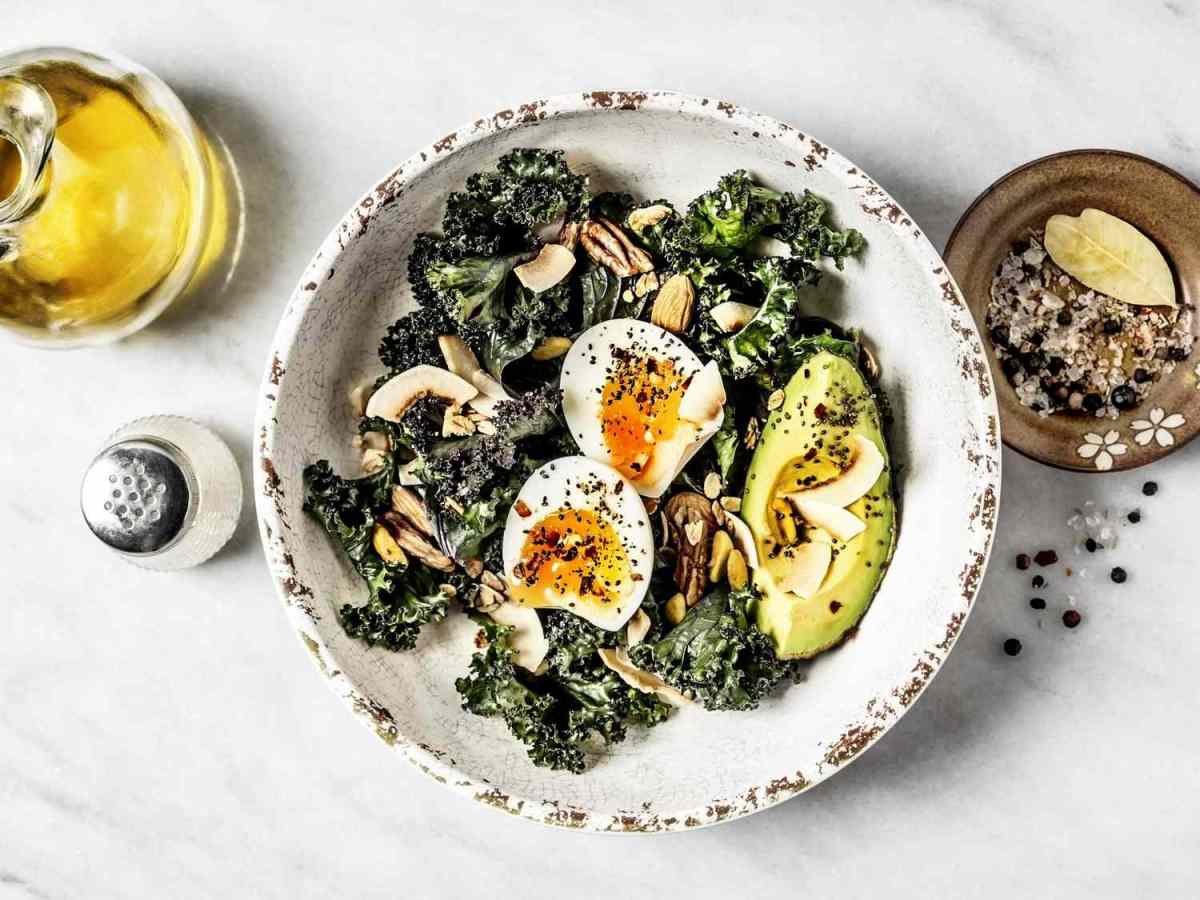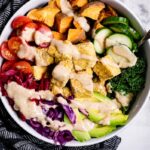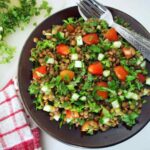Embark on a culinary journey into the vibrant world of flexitarian cooking! This guide unveils the secrets to effortlessly incorporating more plant-based meals into your life, without sacrificing flavor or convenience. Discover a treasure trove of simple, delicious recipes—from quick breakfasts to satisfying dinners and delightful desserts—that celebrate the versatility of vegetables, legumes, and lean proteins. Prepare to be inspired by the ease and nutritional benefits of this flexible and fulfilling approach to eating.
Imagine sun-drenched tomatoes bursting with sweetness, vibrant greens brimming with freshness, and hearty grains offering wholesome satisfaction. Flexitarian eating isn’t about strict limitations; it’s about mindful choices that nourish your body and the planet. This guide empowers you to create balanced, flavorful meals that adapt to your lifestyle and dietary needs, making healthy eating a joyful and sustainable experience.
Easy Flexitarian Breakfast Recipes
Starting your day with a delicious and nutritious flexitarian breakfast is easier than you think! These recipes offer a balanced mix of plant-based and animal-based proteins, ensuring you’re fueled for the day ahead. They are designed to be quick and simple, perfect for busy mornings.
Simple and Quick Flexitarian Breakfast Recipes
Below are three easy-to-make flexitarian breakfast recipes, each designed for speed and nutritional value. They showcase the versatility of flexitarian eating, providing options to suit different tastes and dietary needs.
| Recipe Name | Ingredients | Instructions | Prep Time |
|---|---|---|---|
| Avocado Toast with Egg | 1 slice whole-wheat toast, ½ avocado, 1 egg, salt, pepper, red pepper flakes (optional) | 1. Toast the bread. 2. Mash the avocado and spread on toast. 3. Fry or poach the egg. 4. Place the egg on the avocado toast. 5. Season with salt, pepper, and red pepper flakes (optional). | 5 minutes |
| Greek Yogurt with Berries and Nuts | 1 cup Greek yogurt, ½ cup mixed berries (strawberries, blueberries, raspberries), ¼ cup chopped nuts (almonds, walnuts), 1 tablespoon honey (optional) | 1. In a bowl, combine Greek yogurt, berries, and nuts. 2. Drizzle with honey (optional). | 2 minutes |
| Savory Oatmeal with Mushrooms and Spinach | ½ cup rolled oats, 1 cup vegetable broth, ½ cup sliced mushrooms, ½ cup spinach, 1 tablespoon nutritional yeast, salt, pepper | 1. Cook oats in vegetable broth according to package directions. 2. Sauté mushrooms until softened. 3. Stir in spinach and cook until wilted. 4. Add cooked mushrooms and spinach to the oatmeal. 5. Stir in nutritional yeast and season with salt and pepper. | 10 minutes |
Breakfast Recipe Image Description
The image depicts a sun-drenched kitchen counter, showcasing a vibrant bowl of overnight oats. The oats are a creamy, golden hue, speckled with deep-red raspberries and glistening blueberries. Toasted slivered almonds, scattered artfully across the top, add a contrasting texture and a touch of earthy brown. A drizzle of honey forms delicate, amber threads across the surface, catching the light and highlighting the richness of the berries. The bowl itself is a rustic ceramic, its creamy white contrasting beautifully with the vibrant colors of the fruit and the warm tones of the oats and almonds. The overall effect is one of rustic charm and wholesome deliciousness, promising a healthy and satisfying start to the day. A steaming cup of coffee sits beside the bowl, adding to the comforting ambiance of the scene.
Nutritional Benefits of Flexitarian Breakfast Recipes
The Avocado Toast with Egg provides a good source of healthy fats from the avocado, protein from the egg, and fiber from the whole-wheat toast. The Greek Yogurt with Berries and Nuts offers a significant amount of protein from the Greek yogurt, antioxidants from the berries, and healthy fats and fiber from the nuts. The Savory Oatmeal with Mushrooms and Spinach is packed with fiber from the oats, vitamins and minerals from the spinach and mushrooms, and a boost of protein from the nutritional yeast. These recipes offer a balanced nutritional profile, providing essential macronutrients and micronutrients to support a healthy and active lifestyle.
Quick & Simple Flexitarian Lunch & Dinner Ideas

Embracing a flexitarian lifestyle doesn’t require hours in the kitchen. These quick and easy lunch and dinner recipes are designed to be both delicious and nutritious, offering a perfect balance of plant-based and animal-based ingredients to suit your preferences and schedule. They are adaptable to various dietary needs and skill levels, making healthy eating accessible to everyone.
Quick & Simple Flexitarian Lunch Recipes
A satisfying and healthy lunch can be prepared in minutes, fueling your afternoon with energy and vitality. The following recipes showcase diverse flavors and textures, emphasizing convenience without compromising on nutritional value.
| Recipe Name | Main Ingredient | Cooking Method | Serving Suggestion |
|---|---|---|---|
| Mediterranean Quinoa Salad | Quinoa | Combine cooked quinoa with chopped cucumber, tomatoes, olives, feta cheese, and a lemon-herb vinaigrette. | Enjoy it chilled as a refreshing summer lunch. |
| Black Bean & Corn Salsa with Baked Tortilla Chips | Black Beans | Mix canned black beans, corn, red onion, bell pepper, cilantro, lime juice, and a pinch of chili powder. Serve with baked tortilla chips. | A vibrant and flavorful lunch, perfect with a side of guacamole. |
| Lentil Soup | Red Lentils | Simmer red lentils with vegetable broth, carrots, celery, and spices. | Serve with a dollop of plain yogurt or a sprinkle of fresh parsley. |
| Avocado & Chickpea Toast | Avocado & Chickpeas | Mash avocado on whole-wheat toast, top with mashed chickpeas, a sprinkle of red pepper flakes, and a squeeze of lime juice. | A quick and easy lunch, ideal for a busy weekday. |
| Caprese Salad with Grilled Halloumi | Halloumi Cheese & Tomatoes | Grill halloumi cheese until golden brown. Arrange slices of halloumi with fresh mozzarella, tomatoes, and basil leaves. Drizzle with balsamic glaze. | A light yet satisfying lunch, best enjoyed at room temperature. |
Quick & Simple Flexitarian Dinner Recipes
Dinner doesn’t have to be complicated. These recipes offer a variety of flavors and textures, using simple cooking methods to create satisfying and nutritious meals that are perfect for weeknights.
| Recipe Name | Main Ingredient | Cooking Method | Serving Suggestion |
|---|---|---|---|
| One-Pan Lemon Herb Roasted Chicken and Vegetables | Chicken Breast & Vegetables | Toss chicken breast and chopped vegetables (potatoes, carrots, broccoli) with olive oil, lemon juice, and herbs. Roast in a single pan until cooked through. | Serve with a side of quinoa or couscous. |
| Sheet Pan Shrimp Fajitas | Shrimp & Bell Peppers | Toss shrimp and sliced bell peppers with fajita seasoning and olive oil. Roast on a sheet pan until shrimp is pink and peppers are tender. Serve in warm tortillas. | Serve with your favorite toppings like salsa, guacamole, and sour cream. |
| Lentil Shepherd’s Pie | Lentils & Sweet Potatoes | Prepare a hearty lentil filling with carrots, celery, and onions. Top with mashed sweet potatoes and bake until golden brown. | A comforting and nutritious vegetarian twist on a classic. |
| Salmon with Roasted Asparagus | Salmon & Asparagus | Roast asparagus spears with olive oil, salt, and pepper. Pan-sear or bake salmon fillets until cooked through. | A simple yet elegant meal, perfect for a special occasion. |
| Black Bean Burgers | Black Beans | Mash black beans with breadcrumbs, spices, and chopped vegetables. Form into patties and pan-fry or bake until heated through. | Serve on buns with your favorite toppings. |
Nutritional Comparison of Mediterranean Quinoa Salad and Black Bean & Corn Salsa
The Mediterranean Quinoa Salad and the Black Bean & Corn Salsa offer distinct nutritional profiles, both contributing to a balanced diet. The Quinoa salad provides a good source of complete protein, fiber, and complex carbohydrates from the quinoa, along with healthy fats from the olives and feta cheese. Vitamins and minerals are abundant, including vitamin E from the olives, vitamin C from the tomatoes, and calcium from the feta. The Black Bean & Corn Salsa, on the other hand, is rich in fiber, folate, and antioxidants from the black beans and corn. It’s a lower-fat option compared to the quinoa salad, but still offers a good source of plant-based protein. Both recipes contribute significantly to daily micronutrient intake, showcasing the versatility of plant-based ingredients.
Adapting One-Pan Lemon Herb Roasted Chicken and Vegetables for Dietary Restrictions
The One-Pan Lemon Herb Roasted Chicken and Vegetables recipe can be easily adapted to accommodate various dietary restrictions. For a gluten-free version, ensure that all ingredients (including any pre-made spice blends) are certified gluten-free. For a dairy-free adaptation, simply omit any dairy-based ingredients, such as butter or cheese, that may be used in the seasoning or as a side. The recipe’s inherent simplicity makes it highly adaptable to individual dietary needs, highlighting the flexibility of flexitarian eating.
Essential Flexitarian Cooking Techniques & Tips
Mastering a few key cooking techniques is crucial for creating delicious and nutritious flexitarian meals. Proper preparation maximizes the flavor and nutritional value of both plant-based and animal-based ingredients, leading to a more satisfying and balanced diet. This section will equip you with the knowledge to confidently navigate the world of flexitarian cooking.
Vegetable Cooking Methods for Optimal Nutrient Retention
Cooking vegetables properly is essential to preserve their vibrant colors, textures, and vital nutrients. Overcooking can leach out vitamins and minerals, resulting in a less nutritious and less appealing dish. The best method depends on the vegetable itself.
- Steaming: A gentle method ideal for delicate vegetables like broccoli, asparagus, and green beans. Imagine vibrant green asparagus spears, barely softened, retaining their crispness and bright color. Steaming uses minimal water, preserving water-soluble vitamins. The steam gently cooks the vegetables, preventing overcooking and nutrient loss.
- Roasting: Roasting brings out the natural sweetness of vegetables like carrots, sweet potatoes, and Brussels sprouts. Picture caramelized Brussels sprouts, their edges browned to perfection, exuding a rich, nutty aroma. High heat intensifies their flavors and creates a delightful texture.
- Sautéing: A quick cooking method perfect for vegetables like bell peppers, onions, and mushrooms. Envision brightly colored bell peppers, glistening with olive oil, their flavors enhanced by a touch of garlic and herbs. Sautéing retains crispness while adding depth of flavor.
- Boiling: While boiling can be less ideal for nutrient retention compared to other methods, it’s suitable for certain vegetables that require longer cooking times, like potatoes. Think of creamy mashed potatoes, perfectly cooked and fluffy, showcasing the natural starchiness of the potato. Boiling should be done quickly and with minimal water.
- Stir-frying: A rapid cooking technique ideal for a wide variety of vegetables. Imagine a colorful stir-fry brimming with snap peas, broccoli florets, and carrots, each retaining a slight crunch while infused with the aromatic flavors of soy sauce and ginger. Stir-frying preserves nutrients and creates a vibrant dish.
Reducing Food Waste in Flexitarian Cooking
Minimizing food waste is a crucial aspect of sustainable and economical cooking. By implementing a few simple strategies, you can significantly reduce your environmental impact and save money.
- Plan your meals: Creating a weekly meal plan helps you buy only what you need, reducing the likelihood of ingredients spoiling. Imagine a neatly organized refrigerator, stocked with only the ingredients for the week’s meals, minimizing waste and maximizing efficiency.
- Store food properly: Proper storage extends the shelf life of fruits, vegetables, and herbs. Picture your crisper drawer, meticulously organized with fresh produce, each item properly wrapped or stored in airtight containers to maintain freshness.
- Use leftovers creatively: Transform leftover vegetables into soups, stews, or frittatas. Imagine a hearty vegetable soup, brimming with leftover roasted vegetables, transformed into a flavorful and satisfying meal.
- Freeze excess produce: Freezing extends the shelf life of many fruits and vegetables. Picture a freezer drawer filled with individual portions of chopped vegetables or berries, ready to be used in future meals.
- Compost food scraps: Composting turns food scraps into nutrient-rich soil amendment. Imagine a thriving compost bin, teeming with vegetable scraps, transforming kitchen waste into a valuable resource for your garden.
Incorporating Diverse Plant-Based Protein Sources
A flexitarian diet thrives on the diversity of plant-based protein sources. These sources offer a wide range of nutrients and flavors, contributing to a more balanced and complete diet.
A variety of plant-based proteins ensures you obtain a full spectrum of amino acids. Examples include lentils providing a hearty base for stews, chickpeas adding texture and protein to salads, tofu offering versatility in stir-fries, quinoa providing a complete protein source as a side dish, and edamame adding a burst of flavor and protein to snacks. Each source offers unique nutritional benefits and culinary possibilities.
From the satisfying crunch of a perfectly roasted vegetable to the comforting warmth of a hearty lentil stew, this guide has equipped you with the knowledge and recipes to embrace the delicious possibilities of flexitarian cooking. Remember, flexitarianism is a journey, not a destination. Experiment with new flavors, adapt recipes to your preferences, and most importantly, enjoy the process of creating nutritious and satisfying meals that reflect your personal style and dietary goals. Embrace the flexibility, savor the flavors, and discover the joy of mindful eating.
Quick FAQs
What is the difference between vegetarian and flexitarian?
Vegetarians avoid all meat, while flexitarians primarily eat plant-based but occasionally include meat, poultry, or fish.
Can I adapt these recipes for specific allergies?
Many recipes can be adapted; the guide provides substitution suggestions, and further modifications can be made based on individual needs. Always check ingredient labels carefully.
How do I store leftovers from flexitarian meals?
Properly refrigerate leftovers in airtight containers within two hours of cooking. Most recipes will last 3-4 days in the refrigerator.
Are flexitarian recipes expensive?
Many flexitarian recipes utilize affordable ingredients like beans, lentils, and seasonal vegetables. Careful planning and utilizing seasonal produce can help keep costs down.


